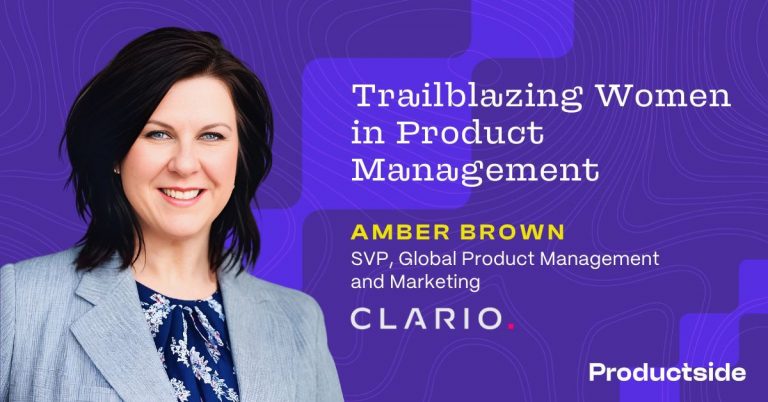
TLDR
- Cameron Lanier is a content marketer based out of Raleigh, NC with little-to-no product management experience
- OPM is far more than 3 days of lecture, but is instead is an interactive course that puts students through the product management process
- 280 Group’s Optimal Product Management (OPM) course served as a 3-day, in-person product management MBA course
Confession: I know very little about Product Management. I was aware that it existed, and at a previous company, we talked about the possibility (at a couple of different points in time), of adding a product manager. But even then, the question was asked, “what will the product manager do?”, (as a company, we needed to learn more about the topic). That was until my eyes were opened a couple weeks back when I did a three-day, in-person “Optimal Product Management” training with 280 Group.
For context: I am a content marketer. My involvement with products in the past has typically been late in the game when the product was closer to being launched. At times I have been involved earlier in the product development process, in some cases even going as far as to be engaged with early product designs (my name is even on a patent!). But I have been handed products close to, or even finished and asked to prepare for the big product launch. How I wish I had known then what I know now. Let me break down my experience for you.

A couple weeks back I walked into a conference room in Raleigh, NC, where I saw my name written on a paper placard, sitting on a table, waiting for me. Other placards were also on the table, and it became clear I had been assigned a table/group before entering the room. Next to the table were large paper pads set on easels, and on the table were pens, sharpies, and sticky notes. As I sat down and took it all in, it became clear this would be more than just a lecture type of training.
Our instructor was the highly engaging Todd Blaquiere, a true expert in the field. Todd quickly went through introductions, got some icebreakers out there to make people more comfortable, then laid out what we would be doing for three days. The Optimal Product Training (OPM) from 280 Group is a 12-module course, meaning we would be doing four modules per day. There would be time for him to give instruction (aided by a slide deck), and then we would participate in activities to utilize the education we had just gained.
Module 1 is about “Taking Charge as the Product Manager.”
Todd started by addressing the fundamental questions that I wanted answered. What is product management? What does a product manager do? I loved Todd’s definitions: the product manager is the “customer’s voice” or the “champion of the customer.” My favorite, however, was that “a product manager should understand the customer’s problem so deeply that they represent the customer in the company.”
My natural next question was, how does a product manager do these things? The modules that followed are designed to answer that question in different ways. We explored Product-Market Fit, Customer Segments, Personas, the Voice of the Customer, and more. The best part, however, was trying to find ways to apply these principles when we met with our respective groups.
As a group, we started by diving deep into understanding the problems our customers face. But this wasn’t going to just be a lecture, so Todd gave us an example scenario that we would be trying to solve throughout the three days. He started us off very broadly, by asking us to identify issues that people run into in “urban mobility.” Our group quickly identified issues with traffic, pedestrians, cyclists, subways, and more.
“…a product manager should understand the customer’s problem so deeply that they represent the customer in the company.”
We would bounce between instruction and group work during which we were slowly narrowing our focus onto a more specific urban mobility problem. Being a marketer in a room full of (mostly) product managers, was very interesting during these stages. It became obvious the product managers wanted to jump to the part where we could start building a product to solve the problems being identified. Todd seemed to anticipate this and kept going table to table reminding groups to focus on problems. “Do not fall in love with your solutions,” Todd kept reminding us, “fall in love with problems.”
Having been part of some product failures, the wisdom in this was compelling for me. Sitting through this training, it became clear that some of the product failures I’ve encountered could and should have done a better job identifying our customers’ problems. We were so focused on solutions we lost the forest for the trees. Doing these exercises in the training with my group, I quickly realized I never want to go back to how I’ve done things in the past.
On day 2, it was the same routine: instruction followed by breaking out into our groups. We were still spending ample time identifying problems, and using the strategies being taught to us, we narrowed our focus to the dangers that cyclists commuting to work face when sharing the road. We learned about and role-played empathy interviews and then started creating personas based on the information from those “interviews.” We received instruction on topics like User Story Mapping, Product Requirements, and even Pricing Strategy, as we started to think about the product we might make to solve the problem we were now focused on.
Pricing Strategy
The pricing strategy was yet another point that resonated with me. One product from a past job stands out as a failure, purely due to pricing. Todd took us through several different pricing strategies, and immediately, I recognized a process that would have saved me a ton of grief. Using this model would have meant more research initially, but it almost certainly would have led us to the conclusion we came to after the product failed: we shouldn’t have made the product as it was too expensive for the target market. That seems like such an obvious thing to identify, but I assure you, it is not. We didn’t use a good pricing model and we ended up with an overpriced product sitting on our shelves that we couldn’t sell, and (even worse), it cost too much to develop the product to cut the price without destroying margins.
On day three, my group (go, team Ravenclaw!) continued to develop our mock product: the SafeCycle, (patent not pending). We began road mapping, discussing a business case for the product, and even talked about what the beta testing process would look like. As the day progressed, we were finally ready to “launch” the product. To my marketing heart’s delight, we discussed best practices in launching a product and how the marketing team should be included far sooner than when the product is ready to launch. As a marketer, I took away how so much of the product manager’s job in identifying problems, creating personas, segmentation, etc., is already very much aligned with the needs of marketing.
Launching our mock product was (thankfully) the easiest product launch ever. After it was “launched,” we continued into modules in which we discussed how to get the maximum ROI on the product and, at some point, the genuine possibility of retiring a product (and the right way to do it).
By the end of day three, I had taken a short MBA (Master of Business Administration) course in Product Management. Product Marketing Management is woven throughout the course, and, as a content marketer, I felt the information about personas, segmentation, empathy interviews, and VoC (Voice of Customer) was invaluable.
Even though the product we developed, (go SafeCycle!), was theoretical at best, going through this theoretical process provided me with an understanding of how product management and product marketing management should work. With that said, one of the best parts of all three days was Todd taking the time for questions. Todd didn’t just teach; he took time to learn a bit about each student’s current job and would often try to help them understand how to apply what they were learning to that job. So often students would learn something they wanted to implement but they weren’t quite sure how at their job or in their industry. Todd often spent time to discuss the application of these principles so that everyone could see that these are real methods/strategies used by the best in product management.

If you don’t know much about product management, (or product marketing management), don’t worry, this course is for you. Todd did an incredible job of helping people feel comfortable as he built them from the ground up (me included). If you feel proficient in product management and wonder if the training is for you, the answer is still yes. It was evident working with the product managers in the room that they had a way of doing things, but it didn’t mean it was the right way. It was telling that the more experienced product managers in the room were asking Todd about additional training when the course was over.
Full disclosure: I am the new Director of Content at 280 Group. I have only been with the company for a month, and attending this in-person training was part of my onboarding process. But regardless of my position with 280 Group, I will forever feel like I have been made a better marketer and that I have a better grasp on how to do business in general because of this training.



